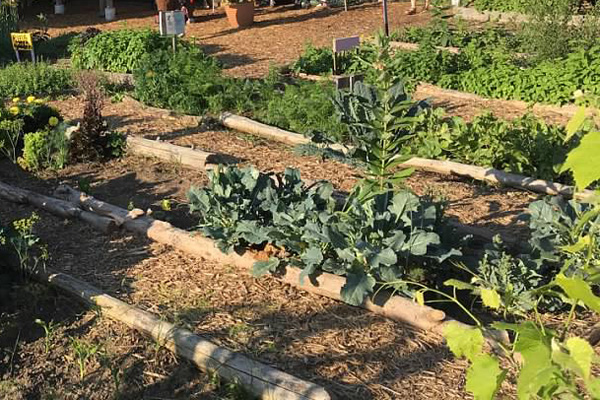Facts About City Blooming Revealed
Facts About City Blooming Revealed
Blog Article
The Main Principles Of City Blooming
Table of ContentsExcitement About City BloomingThe smart Trick of City Blooming That Nobody is Talking AboutNot known Facts About City BloomingAn Unbiased View of City BloomingThe smart Trick of City Blooming That Nobody is Discussing
Fascinated in growing food to buy in the City of Chicago? Thinking of starting a neighborhood garden? Changes to the Chicago Zoning Regulation permit farming usages like community gardens and urban ranches in many components of the city. Below is a checklist of frequently asked inquiries concerning the rules and laws that growers should think about when intending a city farming job.
The zoning change does not modify any kind of other codes dealing with composting, structure licenses, purchasing or leasing City possessed residential property, business licenses or environmental contamination. There are existing codes that manage these concerns and they remain completely effect and may apply to your job. Community yards are typically possessed or managed by public entities, public organizations or community-based companies and maintained by volunteers.
Urban ranches grow food that is planned to be offered, either on a nonprofit or for-profit basis. Because of their industrial objective, city farms call for a business certificate. Yes. An area yard is permitted to offer excess generate that was expanded on site if the sales are accessory or subservient to the garden's primary purpose explained over.
Unknown Facts About City Blooming
Composting is allowed however only for plant material that is created and utilized on website. The quantity of garden compost product can not go beyond 25 cubic lawns at any given time according to the standards in 7-28-715 of the City's Municipal Code. Yes. Due to the fact that the soil at many brand-new yard websites needs amending, compost, dirt, timber chips, or other materials can be acquired to construct or boost the growing room - sustainability.

If a structure license is required then the hoophouse will certainly be thought about an accessory structure. You can locate out more regarding the structure license requirements by getting in touch with the Department of Structures. The 25,000-square-foot dimension restriction is planned to avoid a single community garden from controling a given block or interfering with the block's existing domestic or commercial personality.
The restriction does not use to yards located in Public Open Room (POS) areas. Can there be more than one neighborhood garden that is 25,000 square feet on a solitary block? Yes. The size limit puts on individual gardens, not to specific blocks. No. Fence is not called for, however, yards that have big parking lot may be called for to set up secure fencing or other landscape design features.
Little Known Facts About City Blooming.
B1 & B2 districts call for that all commercial use activities be performed inside. Is fencing needed for metropolitan farms? Fences might be called for, along with landscaping additional reading and testing, for certain car parking locations and outdoor job or storage space locations depending on area and the particular activity taking area.
Urban ranches need building licenses and zoning approvals prior to construction (eco-friendly practices). Various other types of city review might be needed depending on specific structures, tasks, size, landscaping, licensing, public heath and stormwater administration concerns.
Yes. The kind of certificate is figured out by what is happening at the site. The Department of Organization Affairs and Consumer Protection can assist establish the details sort of business certificate that's required. Yes. Off road car park is required for most industrial jobs in Chicago. The needed variety of auto parking spaces is based upon the number of employees dealing with website and not the square footage of the expanding space.
The 9-Second Trick For City Blooming

Yes. A city farm can sell compost product produced on site, nonetheless, the operation must abide by the guidelines in 7-28-715 of the Chicago Municipal Code. Yes. Aquaponic systems are enabled inside your home on metropolitan ranches in several zoning areas. Nonetheless, a zoning evaluation and building permit is required in order to install structures or systems and a company permit is needed as defined above.
As much as 5 hives or swarms of honey bees might be kept as an accessory use. Beekeepers need to register with the Illinois Department of Farming. For more details regarding the recommended zoning change you might contact the Department of Real Estate and Economic Growth, Bureau of Preparation and Zoning at 312.744.8563.
Farming in cities and city locations An urban ranch in Chicago. Urban farming describes numerous techniques of cultivating. https://giphy.com/channel/cityblooming, handling, and dispersing food in urban locations. The term additionally puts on the area tasks of pet husbandry, aquaculture, beekeeping, and gardening in a metropolitan context. Urban farming is identified from peri-urban agriculture, which occurs in backwoods beside suburbs.
The Only Guide to City Blooming
, who seek to create social networks started on a common ethos of nature and neighborhood holism. These networks can establish by method of official institutional support, becoming integrated right into local community preparation as a "transition community" movement for sustainable metropolitan advancement.
In either instance, the more straight access to fresh vegetable, fruit, and meat products that might be understood with city farming can improve food safety and food safety and security while decreasing food miles, resulting in lower greenhouse gas exhausts, consequently adding to climate modification mitigation. A few of the very first proof of city agriculture comes from Mesopotamia.
Report this page